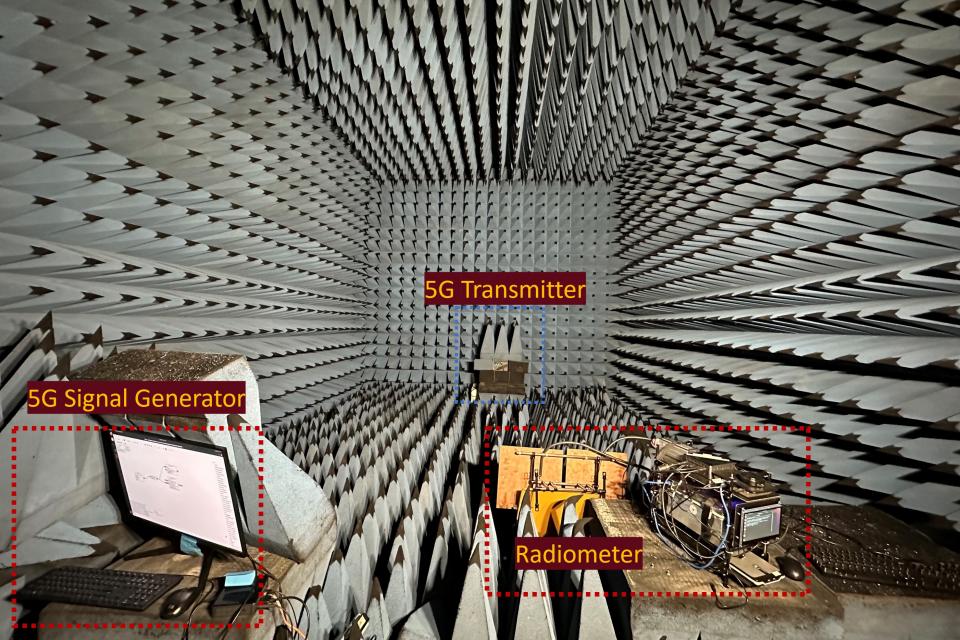Datasets
Standard Dataset
Dataset for Spectrum Coexistence in Passive Sensing and Wireless Communication
- Citation Author(s):
- Submitted by:
- Ahmed Manavi Alam
- Last updated:
- Tue, 04/02/2024 - 10:29
- DOI:
- 10.21227/968t-td34
- Data Format:
- License:
Abstract
In our ever-expanding world of advanced satellite and communications systems, there's a growing challenge for passive radiometer sensors used in the Earth observation like 5G. These passive sensors are challenged by risks from radio frequency interference (RFI) caused by anthropogenic signals. To address this, we urgently need effective methods to quantify the impacts of 5G on Earth observing radiometers. Unfortunately, the lack of substantial datasets in the radio frequency (RF) domain, especially for active/passive coexistence, hinders progress. Our study introduces a controlled testbed featuring a calibrated L-band radiometer and a 5G wireless communication system. In a controlled chamber, this unique setup allows us to observe and quantify transmission effects across different frequency bands. By creating a comprehensive dataset, we aim to standardize and benchmark both wireless communication and passive sensing. With the ability to analyze raw measurements, our testbed facilitates RFI detection and mitigation, fostering the coexistence of wireless communication and passive sensing technologies while establishing crucial standards.
The dataset for a particular sample comprises four data files, each saved in the hierarchical data format (HDF5) as illustrated for a specific sample. Transmitted IQ samples of 5G waveforms are saved with necessary information related to RB allocation, modulation technique, and power gain. The radiometer received sample files are categorized into three distinct levels: Level 0 (L0) for raw IQ data, Level 1A (L1A) for antenna counts spectral data, and Level 1B (L1B) for calibrated brightness temperature data. The L0 data encompasses IQ samples divided into H-pol and V-pol polarization, along with reference sources (ref-1 and ref-2) previously described as 'HS' and 'ACS'. The L1A data includes spectral data of raw antenna counts or IQ samples, featuring both Power Spectral Density (PSD) and Short Time Fourier Transform (STFT) data before digital filtering, after digital filtering (between -10 MHz to +10 MHz), and internal RFI removed (IRR) samples. More details about these pre-processing steps are provided in the following subsection. Spectral data are also available in four different states (H-pol, V-pol, ref-1, and ref-2) of the radiometer.
To understand the transmitted signal's effects in terms of brightness temperature, the fully calibrated brightness temperature data is available in L1B data. This level encompasses spectral time-frequency brightness temperature features along with average temperature in a particular polarization state. Anechoic room temperature, considered as the ground truth brightness temperature during the transmission, is also recorded. The filenames for each sample are constructed with specific attributes, such as "transmission_band_resource block_PowerGain_ModulationTechnique_SampleNumber". For instance, the filename for an out-of-band transmission with 4 RBGs, 0 gain, and QPSK modulation in the L1B data products is named as "outband_4RB_Gain0_QPSK_fc1_rfi_L1B_SN1.h5". This systematic naming convention ensures clear identification and organization of the dataset for future analysis and collaboration in the research community.
More details are available: https://github.com/ahmed-manavi/Active_Passive_Spectrum_Coexistence_Test...
Dataset Files
- inband_6RB_Gain10_QPSK_fc0_rfi_L1B_SN1.zip (97.90 MB)
- outband_6RB_Gain10_QPSK_fc1_rfi_L1B_SN2.zip (89.24 MB)
- Data_Visualization.zip (7.12 MB)
- Data_Generation.zip (17.12 kB)

 595 Views
595 Views




